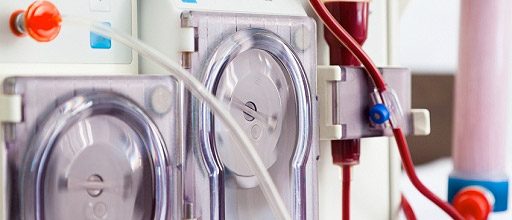
Rising cost of kidney transplant pushing families into financial crisis
Kidney transplant is associated with catastrophic out-of-pocket expenditure in India and pushes the majority of patients who come for treatment to public hospitals into severe financial crisis. Educational drop-outs and loss of jobs are other major concerns.
This has been revealed in a first-of-its-kind study conducted at the Post-Graduate Institute of Medical Education and Research, Chandigarh along with the George Institute of Global Health. A total of 43 men and seven women between the age of seven and 57 years who underwent renal transplant at the PGI Chandigarh between March and September 2011 were administered a questionnaire to ascertain the direct as well as indirect expenditure that they and their families had to incur and the resultant crippling effects it had on them.
Direct expenses included physician fees, cost of drugs and disposables, dialysis, and expenses on investigations and hospitalization. Indirect expenses included travel, food, stay, and loss of income suffered by the family. Educational dropout and financial loss were also recorded. It was found that people traveled long distances, sometimes more than 2000 km, to come to the hospital for renal transplant.
According to the findings of the study reported recently in PLOS One, an open access peer reviewed scientific journal published by the Public Library of Science, direct expenses ranged from Rs. 1.3 lakhs to Rs, 14.2 lakhs and accounted for two-thirds of the total expenses. Indirect expenses ranged from Rs. 13,560 to – Rs. 9.1 lakhs. Travel expenses and loss of income accounted for most of indirect expense. About 54%, 8%, and 10% of families suffered from severe, moderate, and some financial crisis respectively. A total of 38 families had job losses, and 1 patient and 12 caregivers dropped out of studies.
"Need for Out Of Pocket (OOP) financing leaves the Indian population exposed to risk of unforeseen expenditures. Most patients do not have health insurance and meet treatment expenditure from their own resources," says Vivekanand Jha of the George Institute and Professor of Nephrology at the PGI, Chandigarh, adding that India does not have a clear-cut healthcare reimbursement policy which makes matters worse.
The current government spending on health in India is 0.9% of the GDP which is among the lowest in the world. In stark contrast, private expenditure on health is close to 78% compared to 14% in the Maldives, 29% in Bhutan, 53% in Sri Lanka, 31% in Thailand and 61% in China. According to one estimate, only about 5.5% of the Indian population has some form of medical insurance. Practically none of the families below poverty line have any healthcare coverage. Indian healthcare expenses are borne by households in 73.5% cases, by the public sector in 22% and 4.5% from other sources.
"Having a sick member forces financially constrained families to choose between cutting household expenditure and going without treatment," says Dr Raja Ramachandran of the Department of Nephrology at PGI, Chandigarh. "What we found in the study was that availability of reimbursement reduced the likelihood of suffering financial losses."
Prevention of development and progression of chronic kidney disease (CKD) has received a lot of attention over the last decade. Despite this, the number of patients who need dialysis and renal transplantation are likely to rise. According to the Indian CKD registry, about 48% patients receive a diagnosis of CKD for the first time in an acutely advanced state and hospital data show that over 70% of the patients require dialysis soon after presentation. At the PGI Chandigarh, for example, the number of kidney transplants every year rose from about 100 to about 200 over the last three years.
"Since the numbers are likely to rise, two important questions must be answered: first, whether renal transplantation should be offered without any concrete financial plan for treatment, and second, to what extent should the government subsidize this process," says Dr Jha. Some states like Tamil Nadu, Andhra Pradesh and Goa have started schemes that provide free transplant and immunosuppression. However, the coverage of such schemes is still poor.
Within the available resources, a number of strategies can reduce the impoverishing burden of the OOP expenditure. These include pre-emptive transplantation, increased use of peritoneal dialysis (a method of dialysis where the blood is cleaned inside the body) as a bridge to transplantation, avoidance of use of more expensive immunosuppressive drugs and use of metabolic inhibitors to reduce the dose requirement of calcineurin inhibitors and increase chances of donor retention. Insurance should not involve pre-payment by the patient.
In addition to strategies to reduce direct treatment costs, ways need to be devised to reduce the indirect costs as well. This requires increasing the number of transplant centers in the public sector hospitals and making their distribution uniform across the country, as this will reduce the need to travel long distances, prevent family dislocation and reduce the likelihood of loss of jobs and discontinuation of education.


